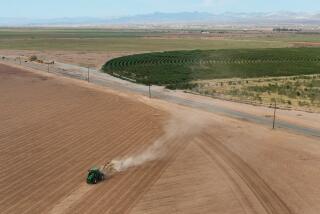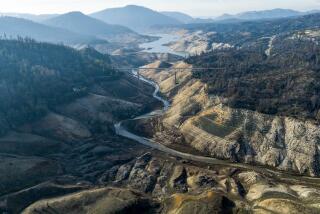El Nino May Be Felt by Midsummer
- Share via
WASHINGTON — The United States could begin seeing the effects of the developing El Nino climate phenomenon by midsummer, government scientists said Thursday.
While the first symptom of El Nino is an unusual warming of the central Pacific Ocean, weather conditions worldwide eventually can be affected.
“This El Nino is still forming, and it’s unclear now at what level of intensity it will be once it’s fully developed,” said Conrad C. Lautenbacher, administrator of the National Oceanic and Atmospheric Administration.
“If sea-surface temperatures continue their warming trend in the equatorial Pacific, we’ll likely know the intensity by late May or June,” he said in a statement.
Depending on its strength, the effects of El Nino could range from reducing the number of Atlantic hurricanes and a drier-than-normal summer monsoon season in the southwest to more Nor’easters next winter.
NOAA researchers say they are observing a continuation of warmer-than-normal sea-surface and subsurface temperatures across much of the equatorial Pacific.
Last month, ocean surface temperatures were as high as 4 to 6 degrees Fahrenheit above average near the coasts of Ecuador and northern Peru. Average ocean surface temperatures are about 81 degrees Fahrenheit in this area in March.
Also, scientists said there was increased rainfall over the extreme eastern tropical Pacific, including the Galapagos Islands, and over the west-central equatorial Pacific.
As El Nino continues to develop, scientists said, the possible effects on the United States could also include a drier-than-normal fall and winter for the Pacific Northwest, warmer-than-normal late fall and winter in the northern Great Plains and wetter-than-normal winter for the Gulf Coast states.
If the intensity of El Nino is strong, central and Southern California could experience wetter-than-normal conditions.






